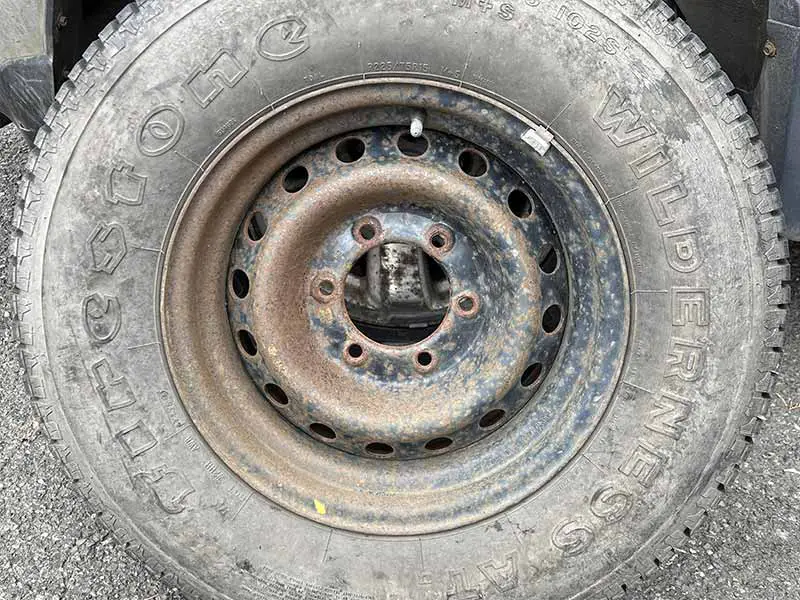Did you know that a recent survey found that nearly 60% of drivers don’t know how to change a flat tire? That’s a surprising number, considering how common flat tires can be.
How Many Times Can You Use A Spare Tire?
You can use a spare tire many times if it is still in good condition. After using a temporary spare, check it for wear or damage before storing it for future use.
Remember that donut spares are not meant for long-term use or high-speed driving, so replace your damaged tire with a regular one as soon as possible.
In this article, we’ll guide you through the ins and outs of spare tires – those trusty lifesavers that can save your day when you’re facing a flat tire. You’ll discover the different types of spare tires, when and how to use them, and even some helpful tips to maintain them properly.
Let’s take a closer look.
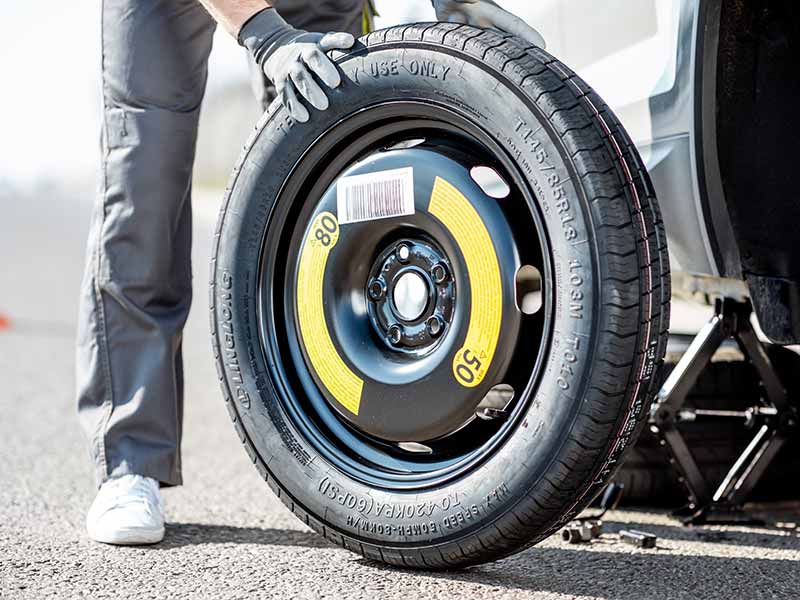
Types of Spare Tires
When it comes to spares, there are a few different types you might find in the trunk of your car or truck. Knowing the differences between them can help you be prepared for those unexpected flat tire situations.
Let’s dive into the three main types of spare tires you might come across:
Full-Size Spare Tires
Full-size spares come in two varieties: ‘normal’ full-size spares and full-size temporary spares. A ‘normal’ full-size spare is just like the other tires on your car or truck. It’s the same size and shape and can be used just like a regular tire.
You might see these on the back of some off-road vehicles like Jeeps. These spares are great because you can drive on them without any restrictions, but they can be a bit heavier and take up more room in your trunk.
On the other hand, a full-size temporary spare is still the same rolling diameter as the normal tires on your vehicle, but it’s not meant for long-term use. These temporary tires are lighter and less durable than regular full-size tires, which makes them great for short-term fixes until you can get your regular tire repaired or replaced.
They may have some usage restrictions, similar to donut spares, but they offer better stability and performance than a donut spare.

Donut Or Compact Spare Tire
A donut spare, also known as a compact spare tire, is a smaller, lighter version of a regular tire. It’s super handy because it takes up less space in your trunk, but it’s not meant for long drives. These spares are designed to get you to the nearest tire shop or service station to have your regular tire fixed or replaced.
Remember, donuts should only be used for a short distance and at a slower speed. Another type of compact spare is the collapsible spare, which needs to be inflated before use. These are even more space-saving, but they might require a bit more effort to get ready for use.
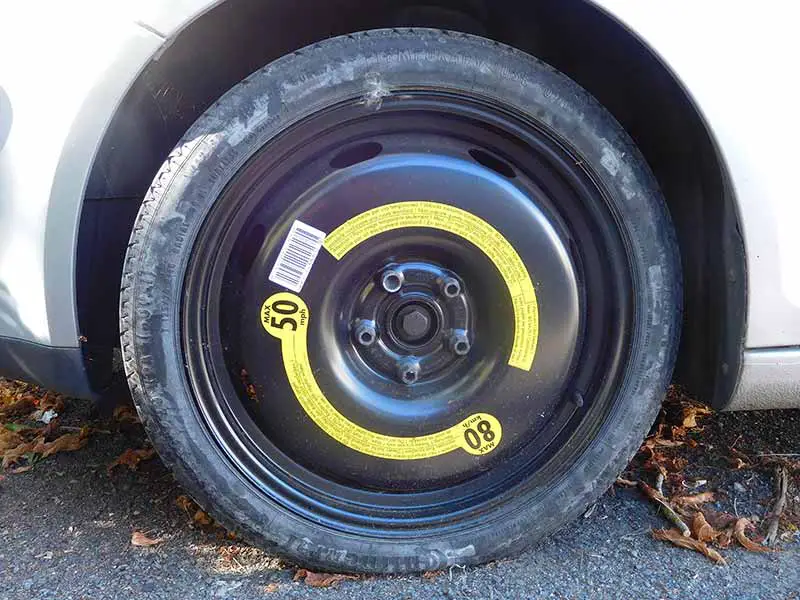
Run-Flat Tire
Run-flat tires are pretty cool because they can keep working even if they have a puncture. They have a special design that allows you to drive on them for a limited distance at a reduced speed, even if they lose air pressure.
While run-flats aren’t really spare tires, they’re an alternative to having a spare in your vehicle. The pros of run-flat tires are that they save space and can be more convenient in case of a puncture. However, the cons include that they’re often more expensive than regular tires, can be harder to find, and may give you a rougher ride.
Driving Speed And Distance Restrictions For Spare Tires
Depending on the type of spare you have, there might be some rules about how fast you can drive and how far you can go. If you’re using a donut or compact spare tire, you should drive at a slower speed, usually not more than 50 miles per hour (mph).
These types of spares are meant to be used for a short distance, typically around 50-70 miles. Full-size temporary spares might also have some restrictions, so be sure to check your owner’s manual or the information on the tire itself.
If you’re using a normal full-size spare, you can usually drive without any restrictions, but it’s still a good idea to get your regular tire fixed or replaced as soon as possible.
Always remember to drive carefully when using a spare tire, especially in bad weather or on rough roads. Make sure you know the type of spare you have and follow its guidelines to keep you and your passengers safe.
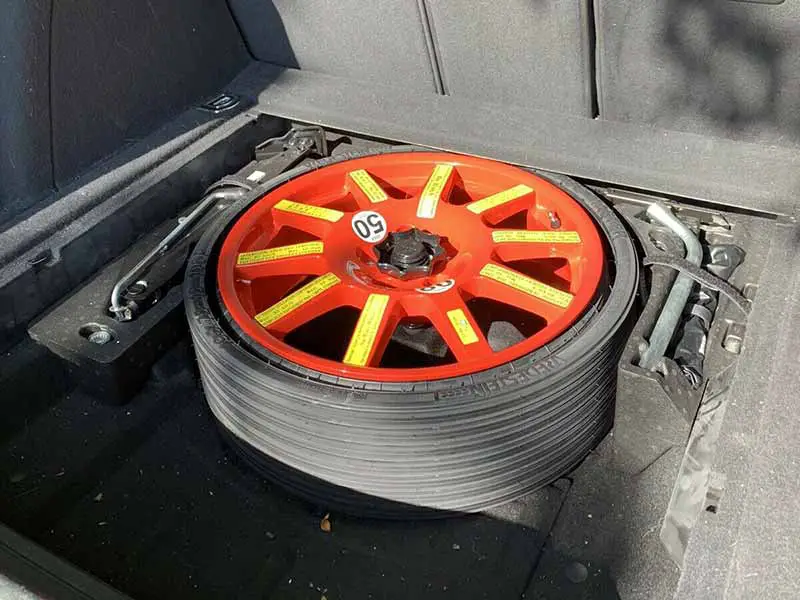
How Many Times Can Spare Tires Be Used?
Now that we’ve discussed when to use a spare and how to do it safely, let’s answer a common question: How many times can you use one? Well, it really depends on the type of spare tire you have and how well you take care of it.
Let’s look at the different spare tire types and how many times you can use them:
- Full-Size Spare Tire: If you have a normal full-size spare tire, you can usually use it as many times as needed, just like a regular tire. However, it’s still important to check it for any wear or damage before using it. And don’t forget to replace your regular tire as soon as possible, so you can keep your spare ready for the next time you need it.
- Donut Or Compact Spare Tire: Donut or compact spare tires are not meant for long-term use. They’re designed to get you to the nearest tire shop or service station to have your regular tire fixed or replaced. You can use a donut spare tire a few times, as long as it’s still in good condition and you follow the speed and distance restrictions. But remember, it’s always best to switch back to a regular tire as soon as possible.
- Run-Flat Tire: Since run-flat tires are an alternative to spare tires and not actually spares themselves, the number of times you can use them depends on their overall condition. These tires can usually be repaired or replaced like regular tires, but you should always consult a tire professional to make sure it’s safe to continue using them after they’ve been punctured.
No matter what type of spare tire you have, keep it in good shape by checking its air pressure, inspecting it for damage, and replacing it when needed.

Maintaining Your Spare Tire
Just like your regular tires, your spare needs some love and attention too. Keeping your spare in good condition means it will be ready to save the day when you need it the most.
Here are some helpful tips to make sure your spare is always in tip-top shape:
- Check The Air Pressure: It’s important to check the air pressure in your spare regularly, just like you do with your other tires. You can use a tire pressure gauge to make sure your spare has the right amount of air. Your car’s owner’s manual or the information on the tire itself will tell you the correct pressure. It’s a good idea to check the air pressure every couple of months or before you go on a long road trip.
- Inspect For Damage: Take a close look at your spare for any signs of damage, like cracks, punctures, or bubbles. If you see anything that looks suspicious, it might be time to replace your spare tire. It’s better to be safe than sorry when it comes to tire safety.
- Store It Properly: Make sure your spare is stored correctly in your car. This usually means keeping it secured in the trunk or a special compartment. Storing your spare properly will help protect it from damage and ensure it’s easy to find when you need it.
- Know Its Age: Tires have a lifespan, even if they’re not being used. Check the manufacturing date on your spare, which is usually found on the sidewall. If your spare tire is more than six years old, it’s a good idea to replace it, even if it looks fine. Older tires can become less reliable and might not perform as well when you need them.
By taking care of your spare tire and keeping it in good condition, you’ll be ready for any unexpected tire troubles. Remember, your spare tire is your backup plan, so treat it with the same care and attention as your regular tires.
Craftsman V20 Inflator – Portable Air Compressor
Do Spare Tires Go Bad?
Yes, spare tires can go bad. Just like regular tires, spare tires can age and wear down over time, even if they haven’t been used much. Here are some things that can cause a spare tire to go bad:
- Time: Tires have a lifespan, and after a certain number of years, their rubber can start to crack and weaken. Generally, it’s a good idea to replace a spare tire if it’s more than six years old, even if it looks okay.
- Heat And Sunlight: Too much heat and sunlight can cause a tire’s rubber to break down faster. If your spare tire is stored in a place where it’s exposed to high temperatures or direct sunlight, it might not last as long.
- Damage: If your spare tire has any visible damage, like cuts, punctures, or bubbles, it’s probably not safe to use and should be replaced.
To make sure your spare tire stays in good shape, check its air pressure regularly, keep it clean, and store it correctly in your car. Also, keep an eye on its age and replace it when needed.
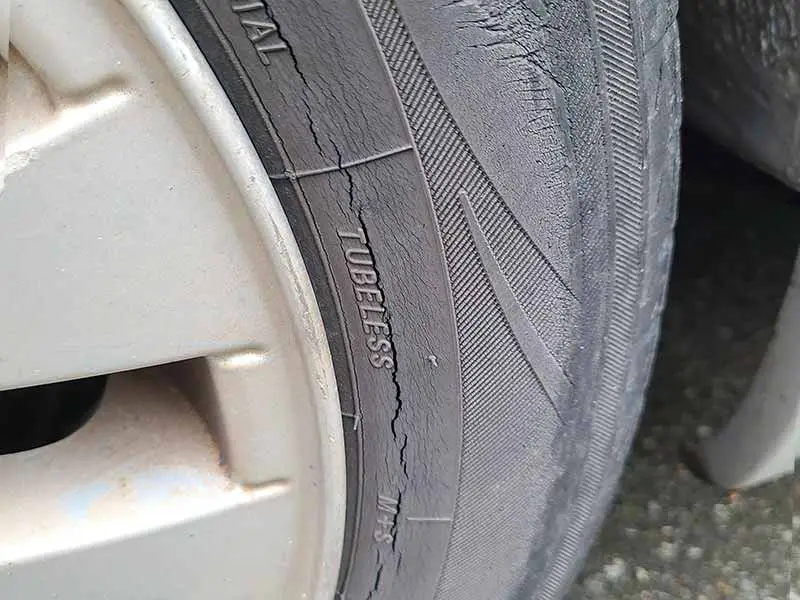
Resources
Below are some links you may find helpful when learning about tires
- Spare Tire Maintenance – Discount Tire
- How long do spare tires last? And other spare tire questions – AAA
Final Thoughts
Spare tires might seem like a small part of your car, but they play a crucial role in keeping you safe and getting you back on the road when faced with a flat tire. By taking good care of your spare and knowing how to use it properly, you’ll be prepared for whatever comes your way.
As the famous tire expert, Harvey Firestone once said, “The tire is the one thing between the vehicle and the road.” So, always treat your spare tire with the same care and attention as your regular tires because you never know when you might need it to save the day.
Good luck and happy motoring.
